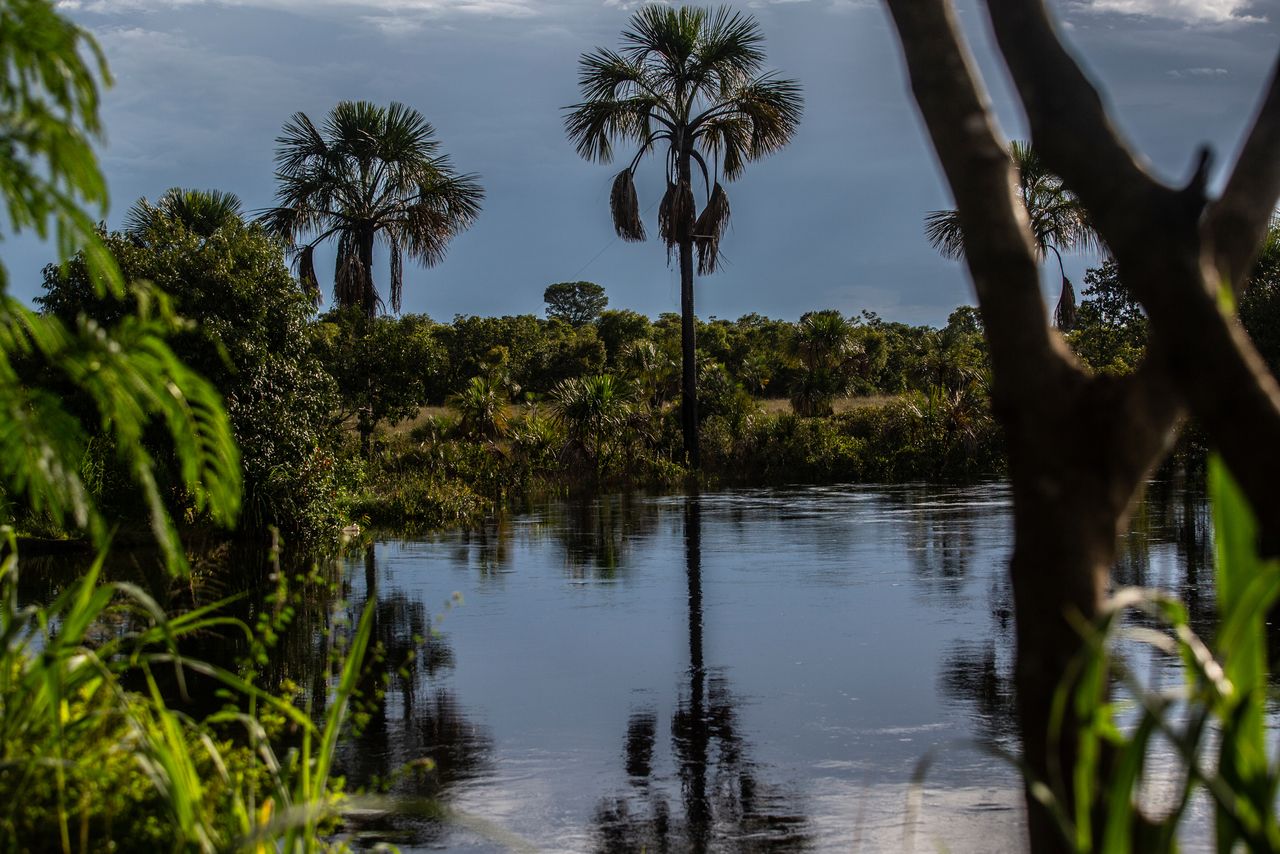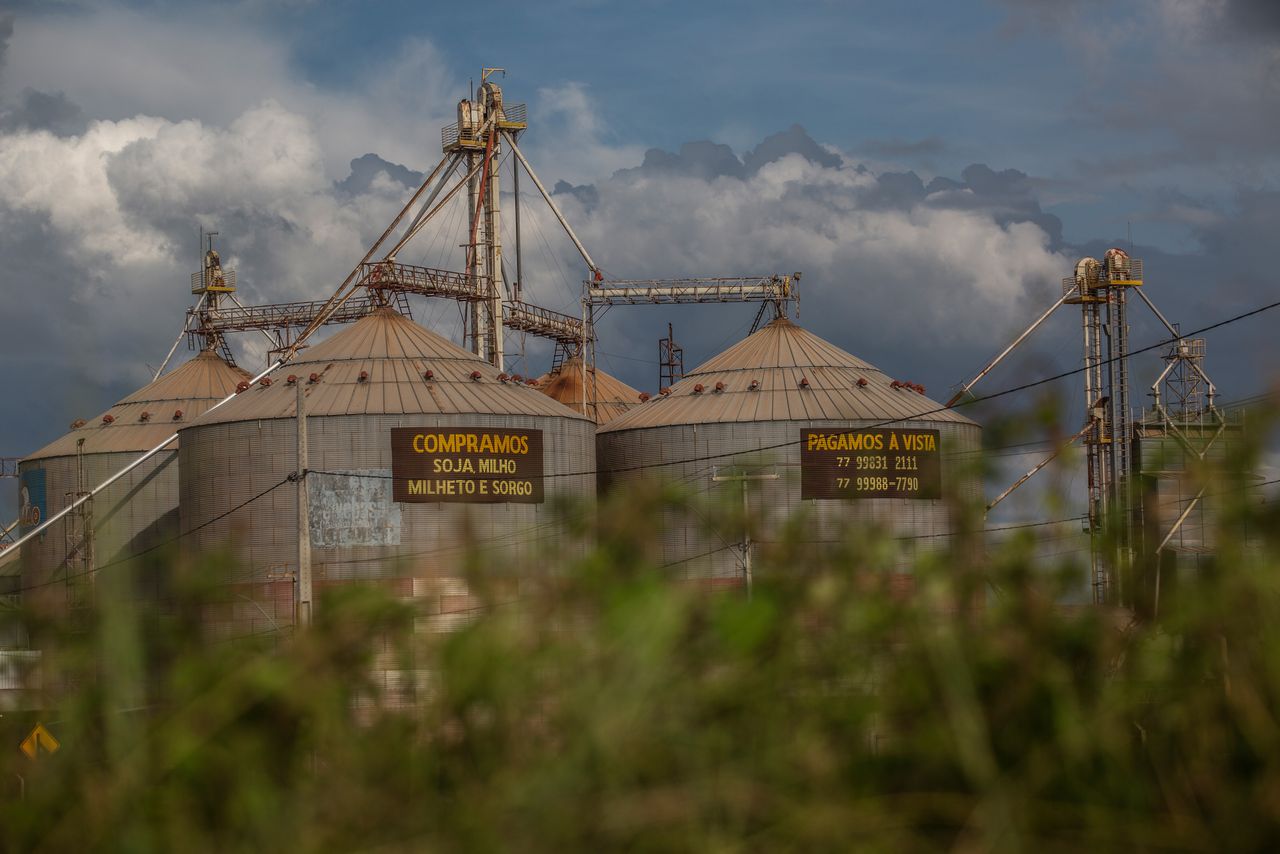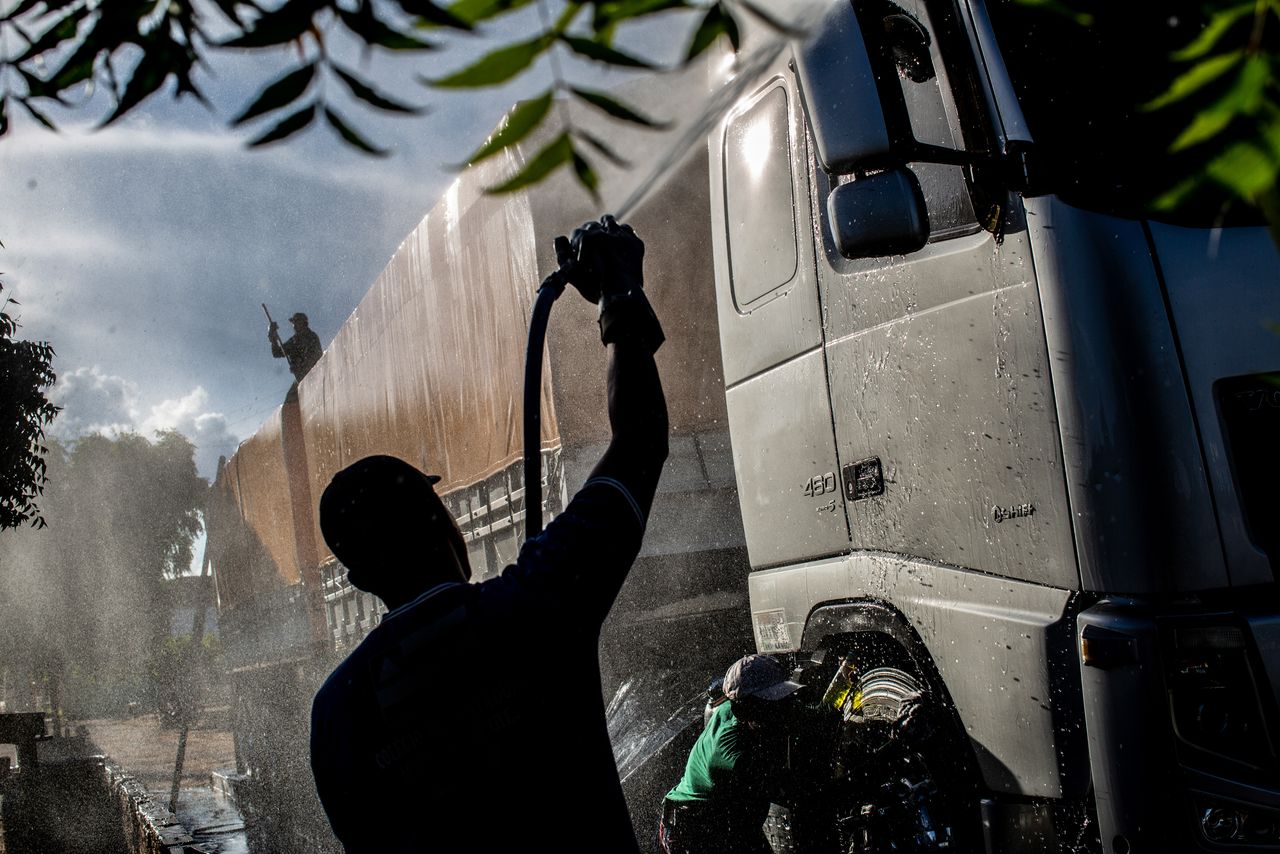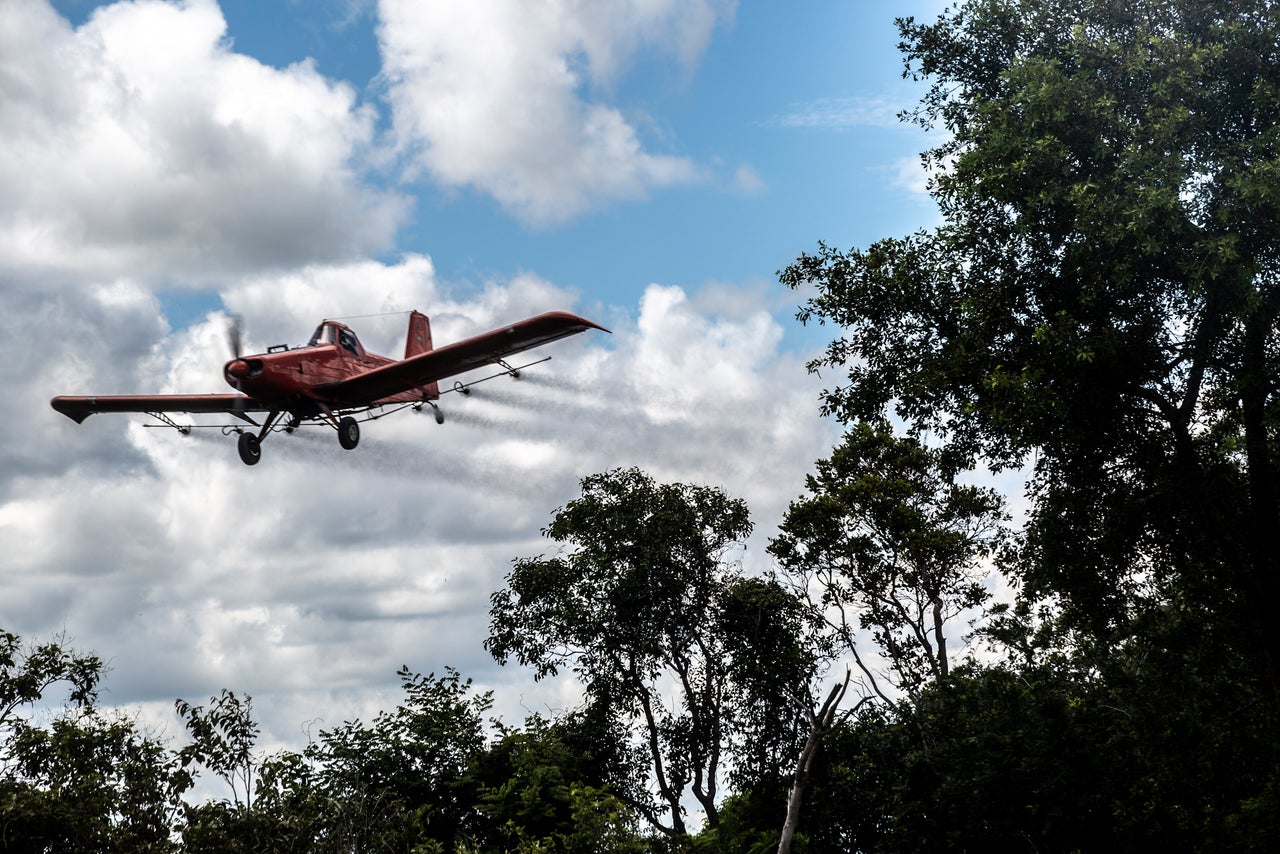The sweeping grasslands, dry forests, scrub and rugged mountains of Brazil’s Cerrado encompass some of the country’s most beautiful national parks. The region’s rich habitat features 11,000 species of plants and more than 200 varieties of mammals, including jaguars, anteaters, armadillos and tapirs.
“It is the most diverse savanna in the world,” said Mercedes Bustamante, an ecology professor at the University of Brasília and a Cerrado specialist.
The Cerrado, which covers more than 20% of the country, is also an important motor in Brazil’s economy, producing over half of Brazil’s beef, 49% of its soybeans, 47% of its sugar cane and almost all its cotton, according to the government agricultural research institute Embrapa.
To raise those crops, the region’s native forests and vegetation are being systematically replaced by farms and ranches. Under Brazilian law, the Cerrado enjoys much less protection than the iconic Amazon rainforest to its north. Half of its land has already been cleared, including some 2,800 square miles last year alone. (That compares to about 20% of the Brazilian Amazon gone.)
Under pressure from the ceaseless agricultural demand and the ravages of climate change, the vital biome is being destroyed at a frightening rate ― and even as its agriculture helps drive the economy, that’s bad news for Brazil.
The Cerrado plays a vital role in Brazil’s water supply, feeding eight of the country’s 12 hydrographic regions and with that much of the country’s electricity supply, around two-thirds of which comes from hydroelectric dams — which makes the signs of climate change that some parts of the Cerrado are experiencing all the more concerning.
While there are no major definitive studies into the Cerrado-wide impacts of land clearing for agriculture, there is plenty of region-specific research that points to trouble. In one so-called transition area, in Mato Grosso state — where the southern Amazon meets the western Cerrado — a study by Costa and others found that deforestation is delaying the onset of the rainy season. Fewer trees and less native vegetation reduces evapotranspiration, the process by which water transfers from plants and soil to the atmosphere, which is a vital part of the water cycle.

Researchers including Costa have also studied the longer dry season in western Bahia state, finding that rainfall has decreased 12% since the 1980s and river discharges have also declined. Land clearing has degraded weather in the northeast Cerrado region where it meets the Amazon, according to another study by researchers from Dartmouth College ― whose modeling found more warm nights, more hot days and less evapotranspiration.
The Cerrado is sometimes called an “upside-down” forest because of the deep, extensive roots its native plants use to dig down for nutrients and moisture. The roots and soil store high levels of carbon, making the region an important carbon sink. But as industrial agriculture continues to swallow up huge tracts of the Cerrado, it could become “a source of carbon,” said Bustamante, meaning it would emit more of the climate-warming gas than it stores.
Yet despite the grave risks, the region remains hugely underprotected. While nearly half of the Amazon rainforest is legally shielded against deforestation, just 7.7% of the Cerrado is. Amazon farmers are allowed to clear 20% of their land; Cerrado farmers can clear trees and native vegetation on up to 80% of their land.
Even with these lax restrictions on land clearing, there is still plenty of illegal deforestation in the Cerrado. A 2020 report published by the monitoring network Trase, along with Brazilian nonprofits Imaflora and ICV, found that 95% of the land clearing on soybean farms in just the Cerrado area of Mato Grosso was illegal.
More broadly, a fifth of the soybeans exported to the European Union from Brazil’s Cerrado and Amazon regions combined and around 17% of the beef “may be contaminated by illegal deforestation,” according to a 2020 study by Brazilian and international scientists.

Many soybean farmers think they should be allowed to clear as many trees and as much native vegetation as they like, within Brazilian law. Why should Brazil preserve its forests, asked Cerrado farmer Alan Juliani, when Europe and the United States long since destroyed much of theirs?
Juliani’s family story mirrors the Cerrado’s development. His grandfather Alcides bought a farm in Bahia in northeastern Brazil in 1980, hoping that growing soybeans would help provide for his eight children. He was one of many pioneer farmers who moved from southern Brazil to the cheaper land of the Cerrado.
Life on Brazil’s soybean frontier was tough. “There was nowhere to buy parts, there were no shops, there was no power, there was no telephone,” Alan Juliani told HuffPost. “It was real suffering.” But things are different now. Today Juliani, 42, is a successful soybean farmer. He is president of Bahia’s branch of the soy producers association (APROSOJA) and farms nearly 15,000 acres in western Bahia, part of a frontier region known as Matopiba.
Like many soybean farmers there, he is skeptical that climate change is affecting the Cerrado. “There was always a lack of rain,” he said. And like many Brazilian farmers, he supports far-right President Jair Bolsonaro, who has attacked and undermined environmental agencies while falsely claiming that Brazil is a model for environmental protection despite soaring Amazon deforestation. Key ministers in Bolsonaro’s government dispute climate change science.
But not everybody in Brazilian government is ignoring the changes in such an important agricultural region. Worried researchers from Embrapa are developing tough new strains of soybeans. “Embrapa soybeans teams are looking for varieties more adapted to climate change because we are seeing more frequent droughts, more frequent excessively heavy rains,” said Alexandre Nepomuceno, the institute’s head of soybeans research.

Many of the soybeans grown by farmers like Juliani are bought by giant international companies ― including two U.S. corporations, Bunge and Cargill, which keep silos across the Cerrado.
As the Cerrado is being swallowed up by agriculture, these companies are coming under pressure to guarantee that the soybeans they trade were not grown on land that was deforested, either legally or illegally. Bunge has promised to eliminate all deforestation — including legal clearing — from its supply chain by 2025, and Cargill has vowed the same by 2030.
The U.S. nonprofit Mighty Earth has attempted to calculate how much land clearance the farms supplying companies like Cargill and Bunge carried out in 2019 and 2020 — and how much of that might have been illegal ― using satellite imagery and supply chain research.
“It is possible that producers can get permits to clear in these areas, but it’s very unlikely they have done. We present these cases to all the traders. If they come forward with documentation, we will exclude that record,” Sarah Lake, Mighty Earth’s global director for Latin America, told HuffPost.
Both Cargill and Bunge said they do not source from illegally cleared land.
“We will not source soy from farmers who clear land illegally or plant in protected areas,” said a spokesperson for Cargill. “This is outlined in our Soy Policy and we hold our suppliers accountable to complying with our expectations.”
A spokesperson for Bunge said the company “does not source soy from illegally deforested areas. ... Bunge monitors the occurrence of deforestation on direct supply farms, and blocks any farm that does not comply with environmental or labor legislation.” As to Mighty Earth’s report, the spokesperson added, “in all the cases linked to Bunge there was no connection with soy planted over deforested areas and sourcing to the company. Also, the report is based on past relationships, and not future ones.”

But neither company monitors all of its Brazilian suppliers, and the devil is in the details.
Both corporations are part of the Soft Commodities Forum, a group of six food giants working to develop a soybean supply chain free of land conversion. As part of this forum, Cargill and Bunge monitor direct suppliers across 25 municipalities. “Direct suppliers” are farms selling directly to them, rather than indirectly through another farm or organization.
But they still don’t monitor all of their indirect suppliers, which in Cargill’s case supply 31% of its Brazilian soybeans (Bunge has not released that figure). “They are looking at less than half of the soy coming into their supply chain,” said Lake.
Nor is full monitoring likely to happen soon. “Traceability for indirect sources is a long journey,” the December 2020 Soft Commodities Forum report said.
Bunge and Cargill also continue to buy from at least one farm known to be involved in legal land clearing in the Cerrado. Both are customers of SLC Agrícola, a Brazilian company that said it legally cleared 5,200 hectares of land (12,850 acres) on just one Cerrado farm, called Fazenda Parceiro, in 2020. SLC Agrícola told HuffPost that it had “followed all the norms and regulations.”
Neither Cargill nor Bunge explained how doing business with a company still clearing Cerrado land would help them reach their zero-deforestation goals. “We can confirm that SLC Agrícola is not on any embargoed list,” said Cargill. A Bunge spokesperson said, “We have a time-bound plan with clear goals to reach deforestation-free supply chains.”

There is increasing international pressure on Brazil to do something about its environmental destruction. In January, French President Emmanuel Macron criticized Brazilian soy for its links to deforestation. He suggested Europe would start to grow its own soy, tweeting: “We are consistent with our ecological ambitions, we are fighting to grow soy in Europe!”
But farmers like Juliani insist they are not concerned. “Exports are going really well,” Juliani said. “The global price is very good. It is a very good moment.”
And while harvests continue to break records, farmers in the Cerrado seem unwilling to change course. “We produce legal soybeans for our whole world. And as Brazil is an agricultural frontier country, there is a lot more land still to be cleared,” said Juliani.
The Brazilian government predicts production for the 2020-2021 harvest will hit a record 133.8 million tons as China gobbles up most of the high-protein soybeans that Brazil produces.
Even if Europe ― which imported 13.7 million tons of soybean meal and raw soybeans from Brazil during the 2019-2020 harvest ― stops buying over environmental concerns, Brazil can just sell elsewhere, Juliani said. “China is not saying anything. They need our soybeans. And they will need much more,” he added.
But others in Brazilian agribusiness, including farmers’ leaders, are worried about the negative impact that the ongoing environmental destruction is having on their industry, said Daniel Nepstad, a U.S. ecologist who advises three state governments in the Cerrado and Amazon regions. “There is a very serious business concern in Brazil about the possibility of losing markets, losing partnerships, losing investors,” Nepstad said.
Pressure is also coming from retailers, food groups and investors in Brazil and abroad. Companies, nonprofits and other institutions that since 2017 have signed onto a Cerrado Manifesto, calling for immediate action to eliminate deforestation in the region, are turning the screws. In December 2020, more than 160 of them ― including McDonald’s, Walmart and U.K. supermarket chain Tesco ― signed a statement demanding that traders like Bunge and Cargill stop sourcing soybeans from Cerrado areas deforested after 2020. Abiove, the Brazilian soybean association that represents the big traders, refused those demands.
Some companies ― such as Bremnes Seashore, a big Norwegian salmon producer ― have announced they will stop buying Brazilian soy altogether. In February, French bank BNP Paribas said it would not finance companies, traders or farms that lack a strategy to achieve zero deforestation and full traceability of direct and indirect soy suppliers by 2025 at the latest. And leading European poultry producer LDC Group has just said it will request that importers “exclude soybeans from plots newly deforested or converted after [Jan. 1, 2020], in particular in the Cerrado in Brazil.”
“The European market is increasingly under pressure from consumers to address the deforestation in its supply chain,” said Lake of Mighty Earth.
Still, progress remains slow. In November, a joint investigation published in The Guardian and other media outlets found that Tesco and other U.K. stores were selling chickens fed on Cerrado soy supplied by Cargill that was linked to fires and 300 square miles of land clearance. Tesco is still selling the chickens. Cargill told The Guardian that its sourcing broke no rules, nor the company’s own policies.

One current proposal is to provide economic incentives to farmers to stop cutting down trees and vegetation in the Cerrado. Tesco has pledged £10 million ($13.8 million) to compensate farmers who promise not to deforest, even legally, as part of the Cerrado Funding Coalition. As yet, none of the money has been spent, a Tesco spokesman told HuffPost.
Payment for conservation is something that Nepstad also supports. The ecologist argues that compensating farmers to preserve land would meet a commitment made in Brazil’s Forest Code law that was never carried out. There is also precedent for this idea. In the 1990s, Costa Rica pioneered a program, funded by a carbon tax, that paid landowners to protect forests. Along with other conservation efforts, the program helped the country reverse deforestation trends.
Brazil does have a similar program, called Floresta+, developed by Bolsonaro’s predecessor Michel Temer in 2018. The initiative managed to raise $96 million from the United Nations-linked Green Climate Fund for deforestation reductions made during 2014 and 2015, which was paid out just after Bolsonaro took office in 2019. Bolsonaro’s government has since claimed the Floresta+ program as its own, announcing that the money will fund a pilot project for a wider conservation program. Asked if any payments have been made so far, the Environment Ministry did not reply.
Also, in a rare moment of agreement between environmentalist lawmakers and those linked to agribusiness, the Brazilian Congress approved a national policy to pay for environmental services in December.
But environmentalists and researchers say the Cerrado needs far more urgent protection. Tiago Reis, a Brazilian researcher for Trase and the Université Catholique de Louvain in Belgium, interviewed 127 soybean farmers in 2020. He believes soybean farmers should be legally obligated to install “ecological corridors” of native vegetation within their vast fields and barred from deforesting even legally. “There is sufficient degraded land where soy could expand. You really don’t need to clear more native land,” Reis said.
Lake said companies setting deadlines of 2025 and 2030 to end deforestation are still moving far too slowly to stem the rapid rates of destruction in this vital ecosystem. “In 10 years’ time,” she said, “there won’t be any areas left to clear.”
Dom Phillips is an Alicia Patterson Foundation fellow and its 2021 Cissy Patterson environment fellow.
HuffPost’s “Work In Progress” series focuses on the impact of business on society and the environment and is funded by Porticus. It is part of the “This New World” series. All content is editorially independent, with no influence or input from Porticus. If you have an idea or tip for the editorial series, send an email to thisnewworld@huffpost.com.